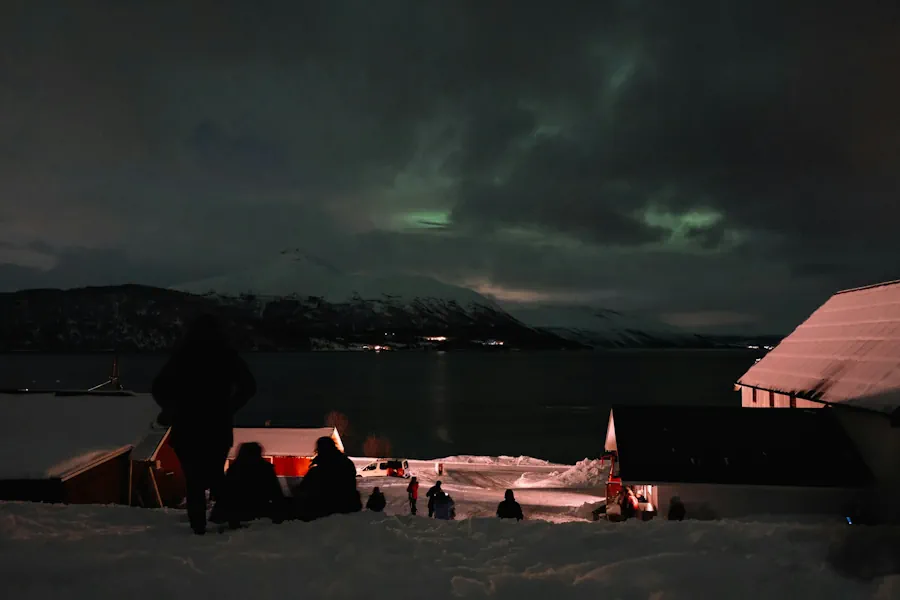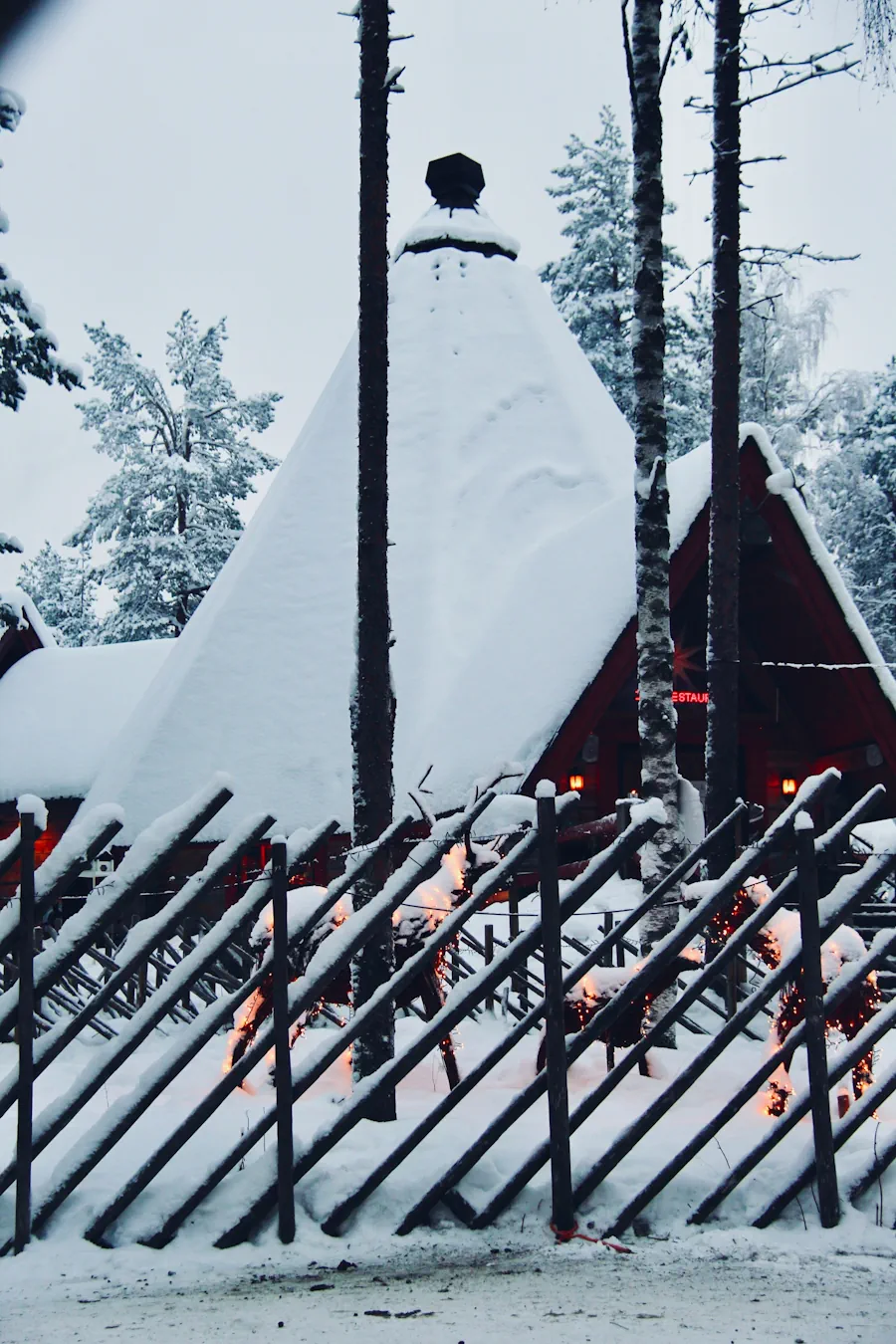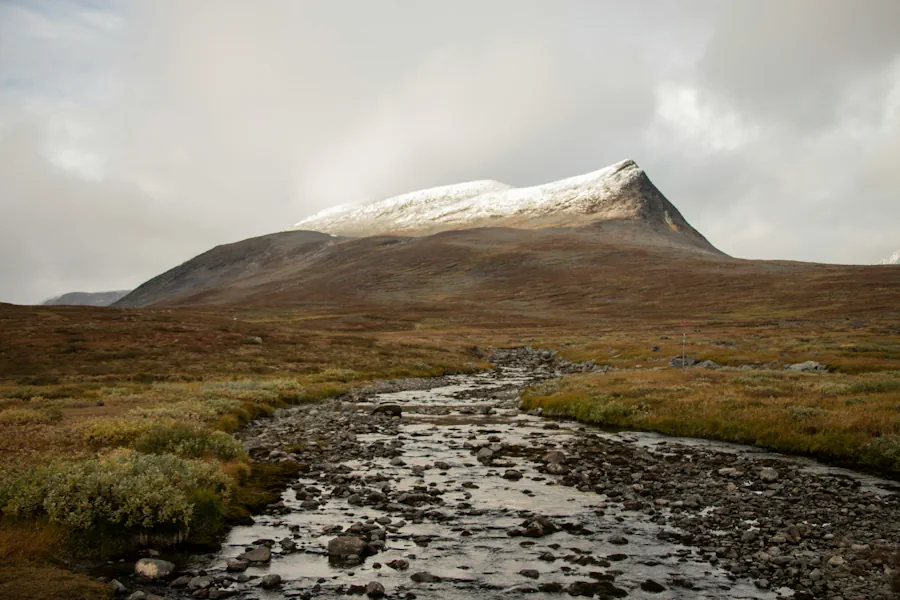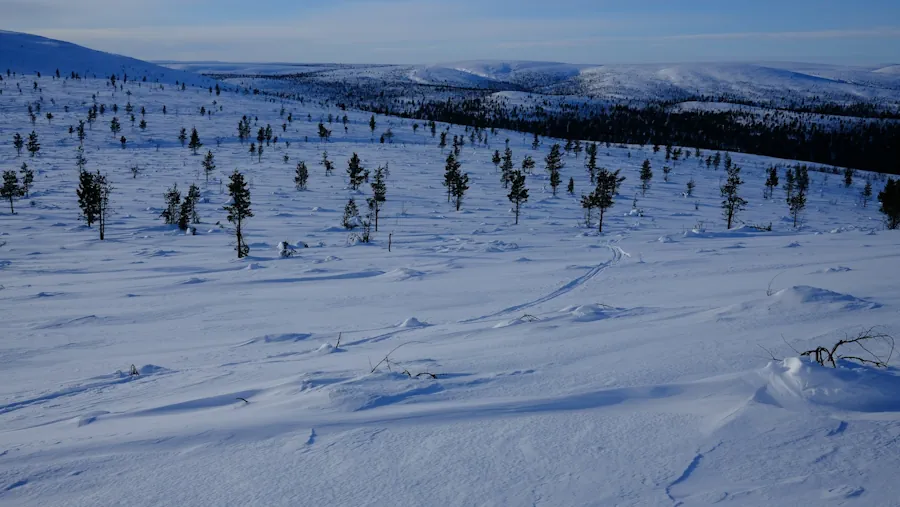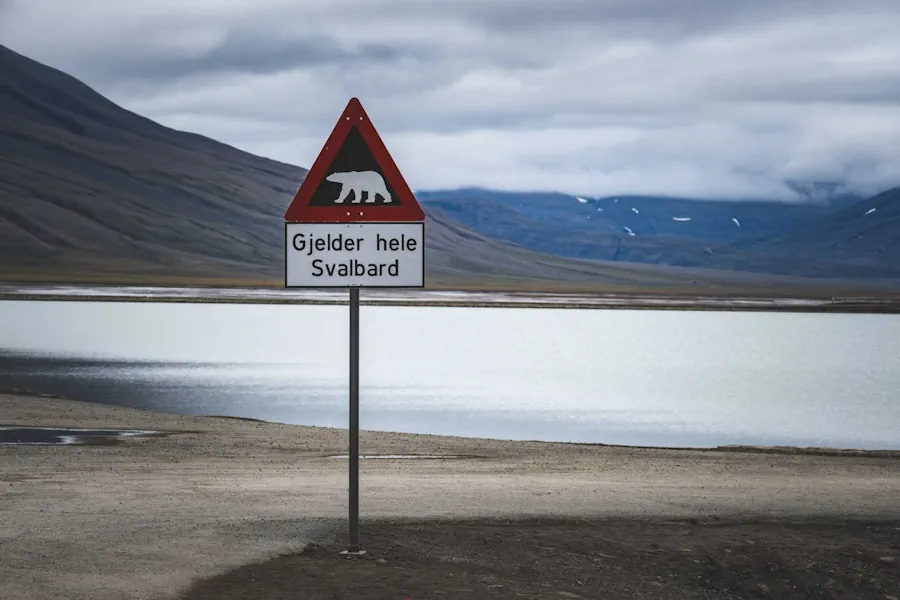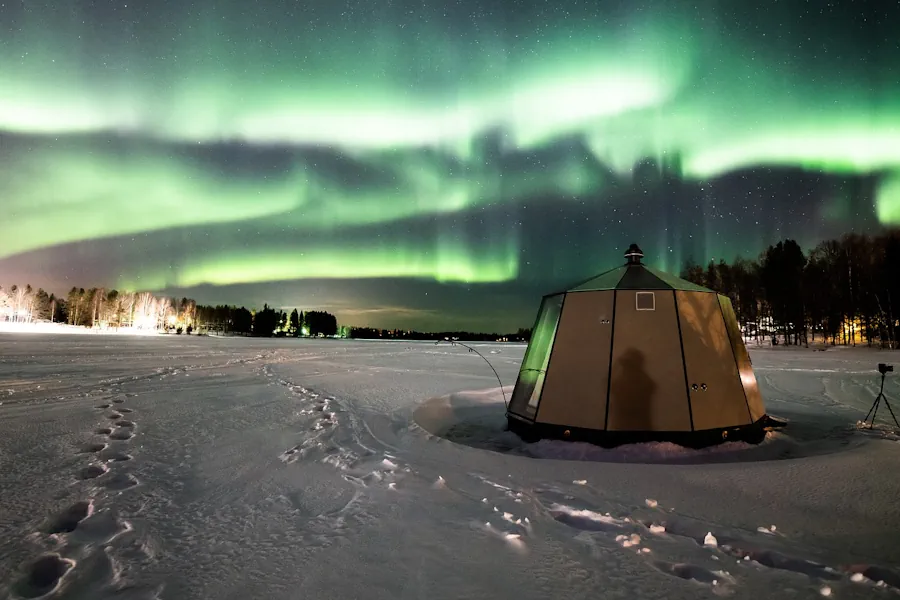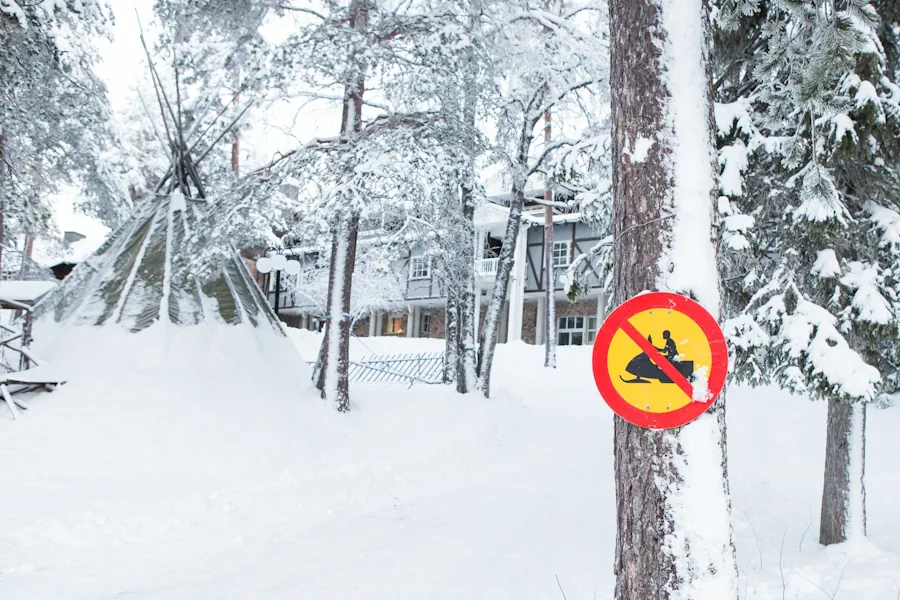The Arctic Circle is all about freedom! At the Arctic Circle, you will find vast expanses, lakes, and your own special hidden gems. This is what it’s all about, both for the local residents and for visitors and tourists. Here, you will also find all the unique activities, sights, and events that make your vacation memorable and complete. Imagine a pristine purity: fresh, white snow, crystal-clear air, and pure water. In Lapland, pollution is still a rarity.
The Arctic Circle is one of the five major circles of latitude that mark Earth’s map-projected divisions. This latitude, at 66.5 degrees north, marks the boundary of the Arctic region. Along this latitude, the region experiences periods of midnight sun in the summer and polar night in the winter.
Facts about the Arctic Circle
- Midnight Sun and Polar Night: In the summer, the sun never fully sets, resulting in 24 hours of daylight known as the midnight sun. In the winter, during the polar night, the sun does not rise above the horizon for a period. Exciting, but it can also pose challenges.
- Climate: The region north of the Arctic Circle has a cold climate, with long, frigid winters and short, cool summers.
- Wildlife and Vegetation: Despite harsh climatic conditions, there is a diversity of animal species and vegetation that have adapted to these extremes, including polar bears, reindeer, and various species of mosses and lichens.
- Population and Culture: Areas north of the Arctic Circle are sparsely populated but host several indigenous populations, such as the Sami in Scandinavia, who have adapted their lifestyles to these unique conditions.
The Latitude of the Arctic Circle
The Arctic Circle is located at the latitude 66°33′47.8″ N.

What is the Arctic Circle?
The Arctic Circle is the northernmost of the five major circles of latitude that are marked on maps of the Earth. The Arctic Circle marks the boundary where, at the summer solstice, the sun does not set and shines for 24 hours straight. Similarly, at the winter solstice, the sun does not rise, leaving the Arctic Circle in darkness for 24 hours.
This is due to the tilt of the Earth’s axis, which leans towards and away from the sun throughout the year. During June and July, the Arctic Circle receives significantly more sunlight than any other place on Earth due to this tilt of 23.5° towards the sun.
Where is the Arctic Circle?
 The Arctic Circle passes through parts of the following countries:
The Arctic Circle passes through parts of the following countries:
- Sweden
- Norway
- Finland
- Russia
- USA (Alaska)
- Canada
- Greenland (Denmark)
- Iceland (Grímsey)
Although we often use precise numbers when talking about the Arctic Circle, the truth is that it is in constant motion. The exact location of the Arctic Circle depends on the tilt of the Earth’s axis relative to the sun, but other factors, such as the gravitational forces of the planets, the moon, and the sun, also play a role.
Importance for Research and Environmental Monitoring
The Arctic Circle is also a crucial location for climate research and environmental monitoring due to its sensitivity to climate change. Researchers study ice melting, changes in ecosystems, and weather patterns to better understand global climate changes. Expeditions to the Arctic Circle date back to the 1800s.
Tourism and Attractions
The Arctic Circle has become a popular destination for tourism, where visitors can experience the midnight sun, the northern lights, and traditional culture. Visiting the Arctic Circle is a unique experience that offers insights into both natural wonders and human adaptability.
Tourism at the Arctic Circle offers a unique blend of natural experiences and cultural insights. Whether you want to experience the eternal sun, see the dancing lights of the northern lights, meet Santa Claus, or immerse yourself in Sami culture, the Arctic Circle has something to offer. It is a place where human adaptability and natural beauty meet, making every visit memorable.
The Arctic Circle is a fascinating destination for tourists from all over the world. It offers a range of experiences from witnessing natural wonders to learning about the rich cultural traditions of indigenous peoples. Here are some of the most popular attractions and activities that make the Arctic Circle an exciting destination.
Midnight Sun
The midnight sun is a phenomenon that attracts many visitors to the Arctic Circle during the summer months. During this time, the sun never fully sets, meaning it is light around the clock. It is a magical experience to see the sun hovering low over the horizon in the middle of the night. Popular places to experience the midnight sun include Norway’s Nordkapp and Kiruna in Sweden.
Northern Lights
The northern lights, or aurora borealis, is another natural phenomenon that draws tourists to the Arctic Circle, especially in winter. The dancing lights in the night sky create a spectacular sight that is hard to describe. The best places to see the northern lights include Abisko in Sweden, Tromsø in Norway, and Rovaniemi in Finland.
Rovaniemi and Santa Claus Village
Rovaniemi in Finland is known as the hometown of Santa Claus. Here, visitors can meet Santa Claus year-round in Santa Claus Village, send postcards from the Arctic Circle, and cross the symbolic Arctic Circle line. The area also offers other activities like dog sledding, snowmobiling, and visits to Arctic animal parks.
Jokkmokk and the Sami Market
Jokkmokk in Sweden is famous for its annual Sami market held in February. The market is one of the oldest in Europe, dating back to 1605. It is a central meeting place for the Sami people and an excellent opportunity for visitors to experience Sami culture, including traditional food, crafts, and reindeer races.
Arctic Expeditions and Ice Hotels
For the adventurous, there are many Arctic adventures to partake in. These can include anything from snowshoe hikes and ice climbing to staying in an ice hotel. The Icehotel in Jukkasjärvi, Sweden, is the world’s first ice hotel and is rebuilt every year with new artistic themes. Visitors can sleep in ice-sculpted rooms and enjoy a unique Arctic experience.
National Parks and Nature Reserves
The Arctic Circle is home to many national parks and nature reserves that offer fantastic opportunities for hiking, camping, and wildlife watching. Sarek and Abisko National Parks in Sweden, Lemmenjoki National Park in Finland, and Pallas-Yllästunturi National Park are some examples of areas where visitors can experience the pristine Arctic wilderness.
Cultural Experiences and Museums
For those interested in culture and history, there are many museums and cultural centers at the Arctic Circle that offer insights into the region’s rich heritage. Sami Siida Museum in Inari, Finland, and Arktikum in Rovaniemi are two examples of institutions that provide a deeper understanding of both Sami culture and Arctic research.
Traveling to the Arctic Circle
Traveling to the Arctic Circle is a dream for many adventurous travelers. This guide helps you plan an unforgettable trip to one of the world’s most fascinating regions, where you can experience everything from the midnight sun and northern lights to unique cultural encounters and scenic hikes.
To reach Arvidsjaur and Arjeplog, it is quite easy despite the relatively isolated and northern location about 700 km north of Stockholm and only 110 km south of the Arctic Circle. Inland Road 45 between Gothenburg and Karesuando crosses the Silver Road, Route 95 at Skellefteå and the Norwegian border in Arvidsjaur.
The Arctic Circle runs just south of Juoksengi, along Route 99, and a bit south of Jokkmokk along the E45, and just south of the Arctic Circle Station located right after the Iron Ore Line.
Arvidsjaur Airport has daily flights to Stockholm, and there are even international connections to Germany. The county’s bus service offers excellent, comprehensive routes.
With direct bus connections from Jörn or Älvsbyn to Arvidsjaur (about 1 hour), there are also rail connections to other parts of the country. Departure takes place in the evening with a sleeper train in both directions. Additionally, the Inland Line operates daily train services Mora-Östersund-Arvidsjaur-Gällivare throughout the summer.
Best Time to Visit
- Winter: To experience the northern lights, dog sledding, and other winter activities. The winter season runs from November to March.
- Summer: To enjoy the midnight sun, hiking, and summer activities. The summer season lasts from June to August.
Packing
- Clothing: Warm layers, waterproof outerwear, thermal underwear, hats, gloves, and warm boots. In the summer, you will also need sunscreen and insect repellent.
- Equipment: Camera with extra batteries, binoculars, hiking boots, and any special equipment depending on activities (e.g., fishing gear, hiking poles).
Destinations
Sweden
- Abisko National Park: Known for its clear skies, perfect for northern lights viewing and hiking along the Kungsleden trail. Visit the Abisko Aurora Sky Station for a magical northern lights experience.
- Jukkasjärvi: Home to the famous Icehotel, where you can sleep in ice-sculpted rooms and participate in activities like dog sledding and snowmobiling.
Norway
- Tromsø: A popular base for northern lights safaris, whale watching, and winter activities. Visit Polaria and the Polar Museum to learn more about the Arctic.
- Svalbard: For the adventurous, Svalbard offers polar bear safaris, glacier hikes, and midnight sun experiences during the summer.
Finland
- Rovaniemi: Known as the hometown of Santa Claus, with Santa Claus Village as a must-visit. Experience traditional Finnish sauna, northern lights safaris, and visit Arktikum for insights into Arctic culture.
- Lemmenjoki National Park: One of Europe’s largest national parks, perfect for hiking, gold panning, and experiencing traditional Sami culture.
Transport and Logistics
Flights
- Main Airports: Kiruna (Sweden), Tromsø (Norway), Rovaniemi (Finland), and Longyearbyen (Svalbard). These airports have connections from major European cities.
- Local Transport: After arrival, you can travel further by train, bus, or rental car. Domestic flights and helicopter tours are also options in some areas.
Trains and Buses
- Sweden: Trains to Abisko and Kiruna from Stockholm. Buses are available to Jukkasjärvi and other nearby areas.
- Norway: Buses from Tromsø to nearby destinations and ferries to Svalbard.
- Finland: Trains and buses to Rovaniemi and further to other destinations like Lemmenjoki.
Accommodation
Hotels and Lodges
- Icehotel: A unique experience in Jukkasjärvi, Sweden. Combine with warm cabins.
- Aurora Lodges: Specializing in northern lights viewing, available in Norway and Finland.
- Mountain Cabins: Offering simple but comfortable lodging near hiking trails and nature parks.
Camping and Glamping
- National Parks: Many parks offer camping sites and glamping options for a more luxurious nature experience.
- Tents: For the adventurous traveler who wants to experience the Arctic nature up close. Be prepared for varying weather conditions and bring the right equipment.
Tips for a Successful Trip to the Arctic Circle
Respect Nature
- Rules and Regulations: Follow local rules and guidelines to preserve nature and wildlife.
- Leave No Trace: Be careful not to leave trash and respect nature.
Health and Safety
- Clothing and Equipment: Ensure you have the right clothing and equipment to handle extreme weather conditions.
- Preparations: Inform yourself about safety regulations and have an emergency plan.
Local Traditions
- Respect the Culture: Be respectful of local traditions and culture.
- Participation: Participate in local events and activities for a richer experience.
Traveling to the Arctic Circle is a journey to one of the world’s most unique and fascinating regions. By planning carefully and being well-prepared, you can experience the Arctic’s beauty, culture, and adventure in a memorable way. Whether you are drawn by northern lights viewing, Sami culture, or untouched national parks, the Arctic Circle has something for everyone.
